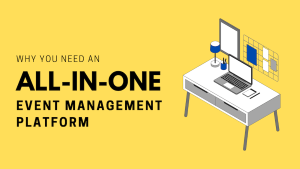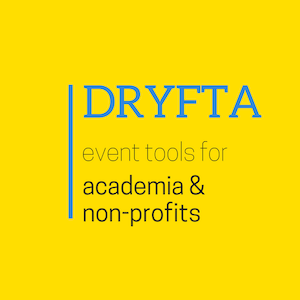
You've been asked to speak at a conference or other event and you're wondering how to make your presentation stand out from the crowd. You want to give the audience something that will help them do their jobs better, but you also want them to remember what you said so they can take action on it. The only way for that to happen is if your presentation has key components that will allow people to recall it later—and those include everything from visuals and Q&A sessions to an outline with a chapter for each content point. Here are some tips for making sure your next presentation stands out:
Give yourself time to prepare
-
Have a good idea of what you want to say:
-
Know your audience: What do they need to know? What are their challenges?
-
Have a clear purpose for your presentation: What do you want the audience to take away from this presentation, and how will that help them in the future?
-
Have a clear structure for your presentation: If possible, it's helpful to write out an outline or flowchart of all the main points that should be covered. This helps keep everything organized and prevents rambling on tangentially related topics (which can make it hard for listeners to follow along). If writing isn't your thing, try creating an outline using PowerPoint or another presentation software program instead. Presentation templates are often available online if none exist already; just Google "presentation template" plus whatever software name is most popular at the moment (e.g., "PowerPoint template").
-
Set a deadline for yourself – give yourself sufficient time both before and after this date so that any last-minute changes or edits can be made without worrying about meeting deadlines!
Create an outline with a chapter for each content point
Now that we've covered how to create an outline and how to write your content, it's time to move on to the next step: creating a presentation!
-
Create a PowerPoint presentation. You can do this by using Microsoft Word or Google Docs and uploading it into your account on SlideShare.com. For each section of your speech, create a separate slide. This will allow you to easily navigate through the presentation during practice sessions before the big day arrives.
-
Create handouts for attendees who want them (optional). Handouts provide an alternative way for people who are taking notes or just want something tangible in their hands when listening to speakers at conferences. If you want to make these handouts available online so they can be downloaded from anywhere by anyone who attends one of these events — no matter where they live — then put them on Slideshare (or another platform) so attendees can print them out beforehand!
Add visuals to your presentation
Visuals are an important part of any presentation. They help people remember your presentation, follow along with your ideas, and understand the topic better.
Here are some tips for using visuals:
-
Make sure that the visuals are relevant to the audience and topic. If you're talking about a project management software package, don't show a diagram of someone's brain—it won't make sense!
-
Use visuals that are relevant to where you're presenting. If it's an hour-long presentation with no breaks at a conference in Las Vegas, don't use photos of waterfalls and beaches—they'll distract from what you're trying to say!
Practice your speech
It's likely that you've practiced your speech dozens of times in the mirror or in front of a friend or family member. That's great, but now it's time to take it to the next level.
Practice your speech in front of a group of people who are not involved with making sure everything goes smoothly, like an audience at your school or work. If possible, have them ask questions throughout your presentation so that they can hear you answer questions as well as give a speech.
Practice until you are comfortable with the flow and content of your presentation. Practice until each part flows naturally into the next part without feeling forced or unnatural (which is easy when reading from notes), and until what you say sounds conversational rather than robotic!
Experiment with Q&A
Take the opportunity to experiment with Q&A. This is your chance to connect with the audience, so try asking them questions about what they liked and didn't like about your presentation. You can even ask them for suggestions on how you could make it better. If you incorporate their ideas into your next presentation, they will be more likely to remember what you said in the first place!
Another way that Q&A can help build rapport between presenters and audiences is by giving both sides a chance for feedback on each other's performance in real time: instead of waiting until after lunch break or at the end of day one (or two), when everyone's tired from sitting through hours upon hours of content—and probably feeling rushed because they're trying still find time before heading back home—you get an opportunity now while everyone's fresh and energized; this makes it easier for both parties involved (you included) because there's no pressure since no one cares if something goes wrong yet; this means there's less pressure so go out there do good work without worry about failing miserably.
Showcase your leadership skills
You can use your presentation to showcase your leadership skills.
When we think of leadership, we often think of those in high-ranking positions—but everyone is a leader. If you’re presenting at work, it might be that your job title isn’t “leader” but you still have the power to motivate and inspire people around you. By showing off these talents during a conference presentation, you can make an impression on others and show them that you know what it takes to lead others.
To do this effectively, be sure to include:
-
A clear introduction that outlines why your presentation matters (your audience will appreciate knowing what they should expect)
-
An overview of the topic or issue at hand—what are we talking about? How did this start? What were some key milestones along the way? Why is it important now? etc…
-
A timeline or roadmap for how things will progress over time–this helps give context for decisions made along the way so people can understand where things went wrong (or right!).
Practice, practice, practice
The best way to prepare for your presentation is by practicing. You should do this by yourself and in front of other people. When you practice with other people, it will help you become more comfortable speaking in front of them, which will make the actual presentation easier for you. It’s also important that when you speak in front of others, they can understand what you are saying. That means using words that everyone knows, so everyone can understand what is going on during your speech.
The best way I know how to prepare for a conference presentation is by doing research about the topic that has been assigned to me or asking my friends if they have any ideas on topics that would be interesting at a conference presentation.
I hope these tips have helped you get started on making your next presentation more memorable. You can always continue to work on improving your skills as a presenter and speaker, but there’s no better way than starting today by giving it your all!





